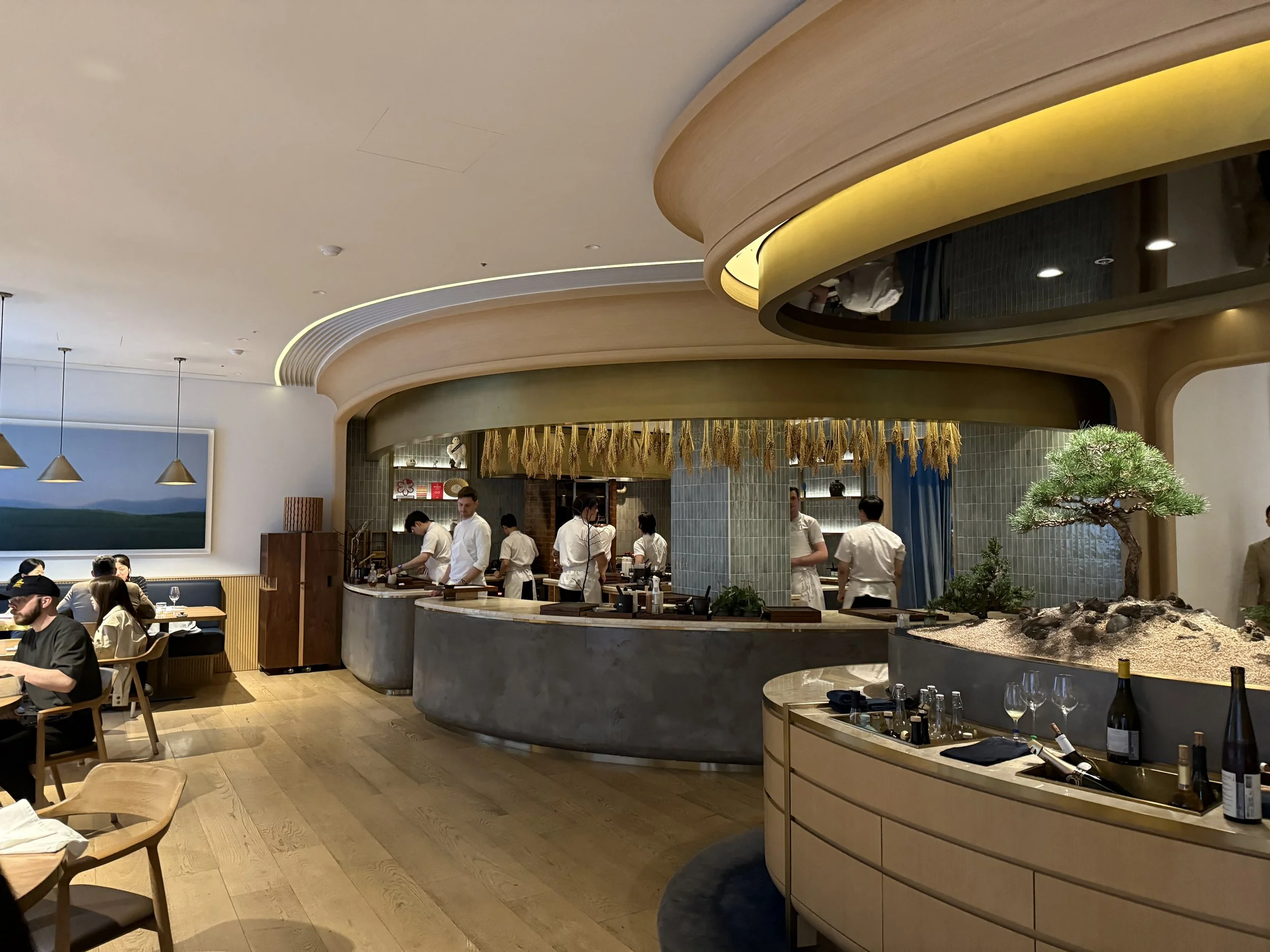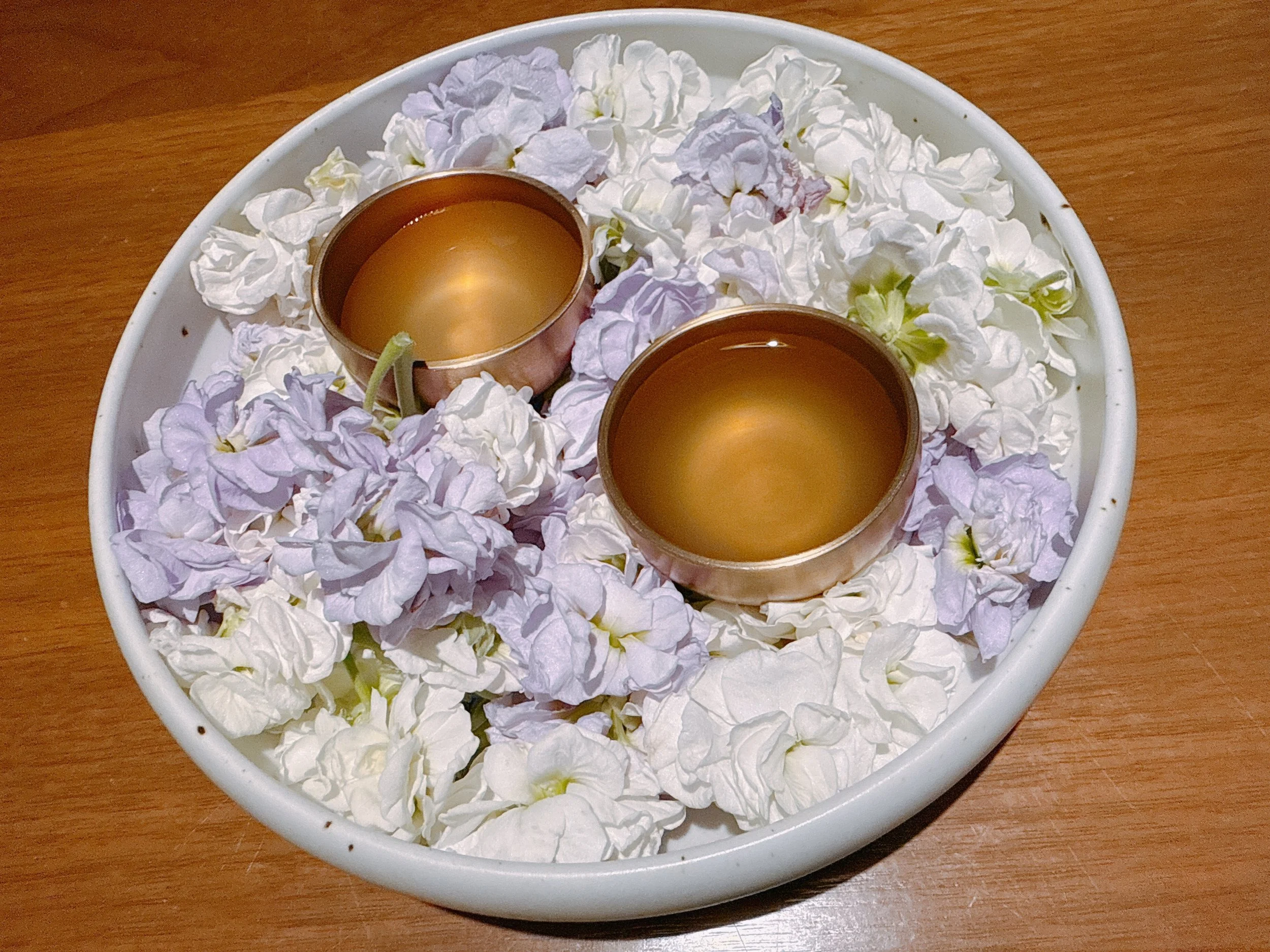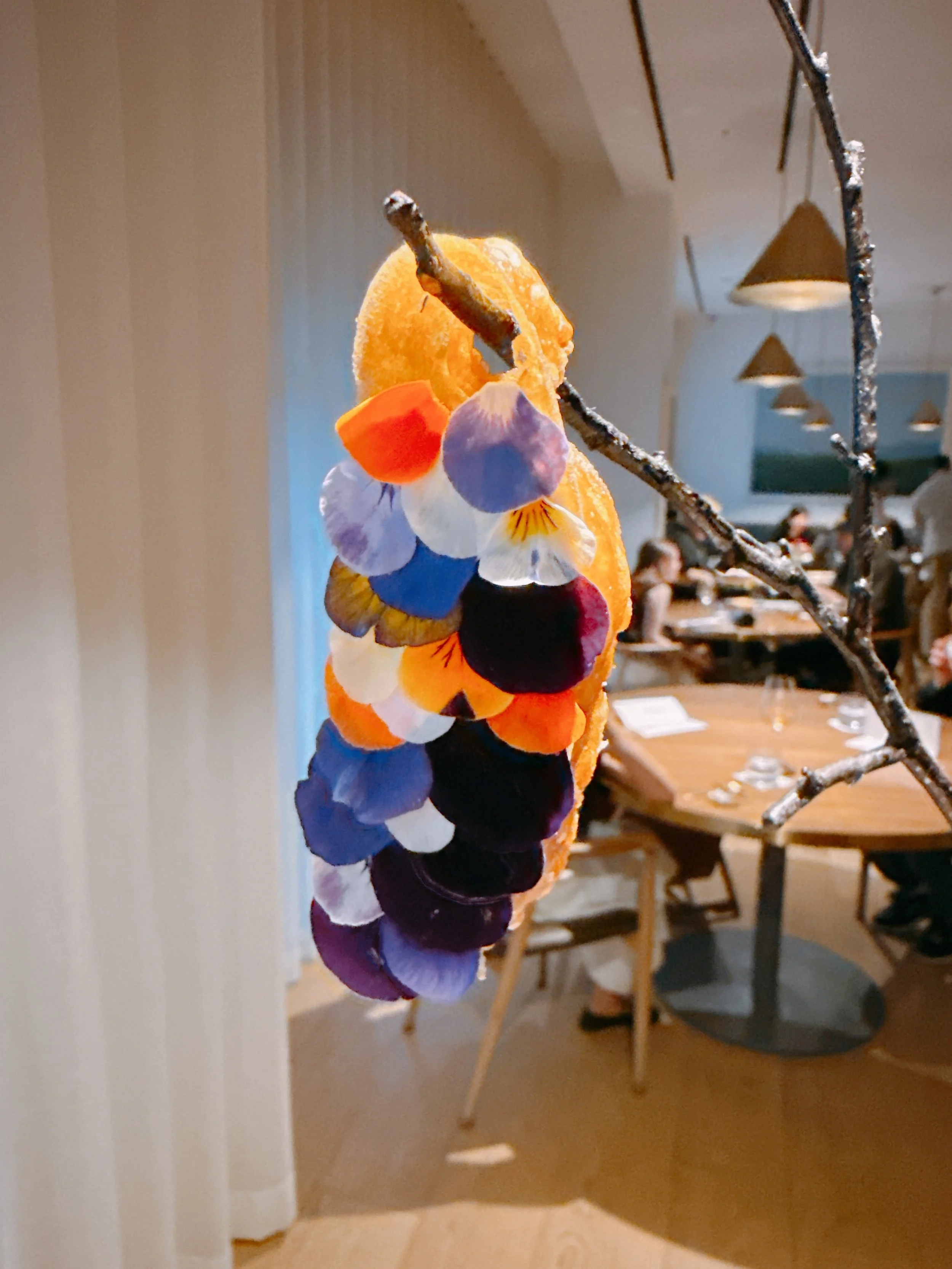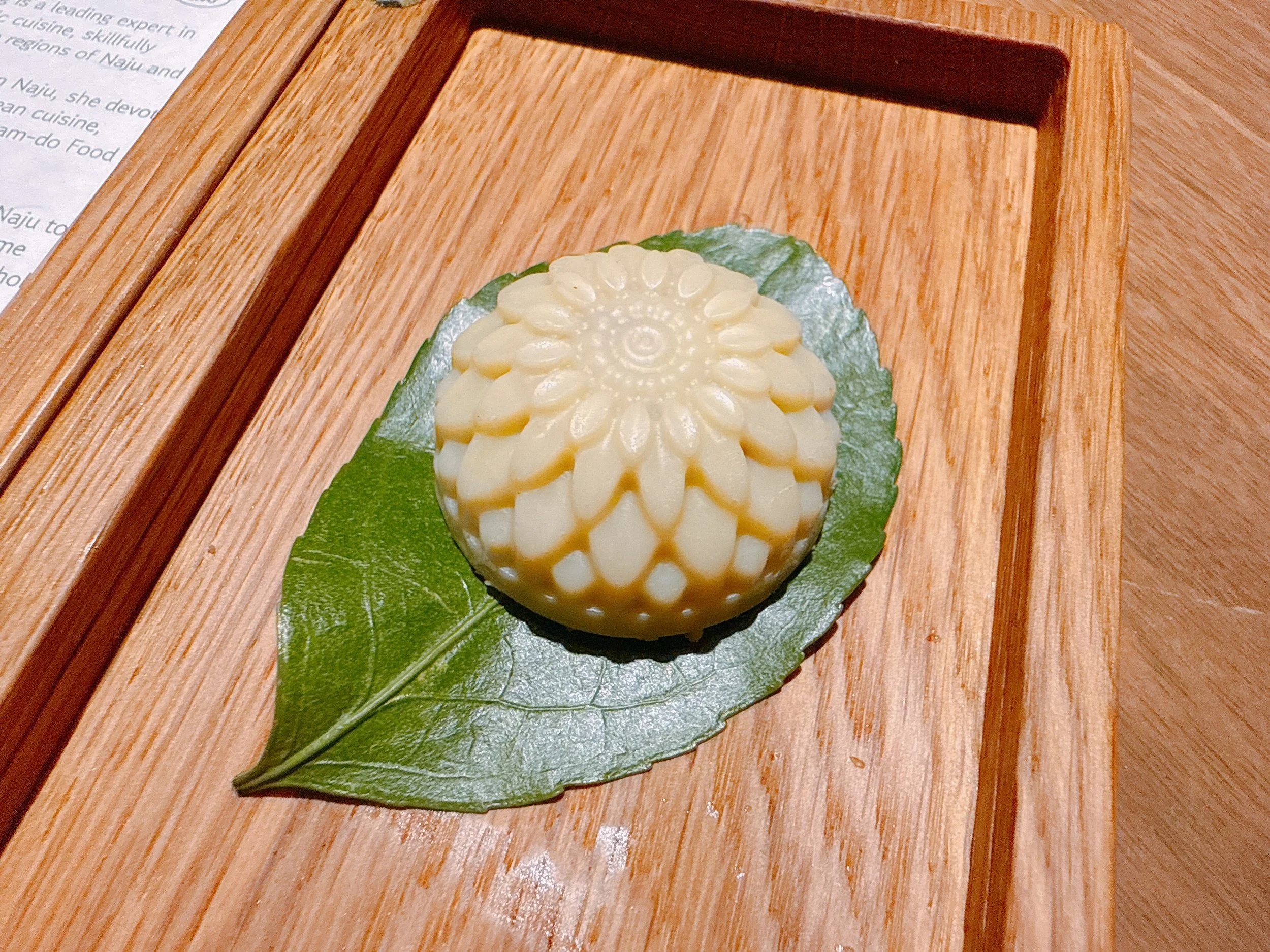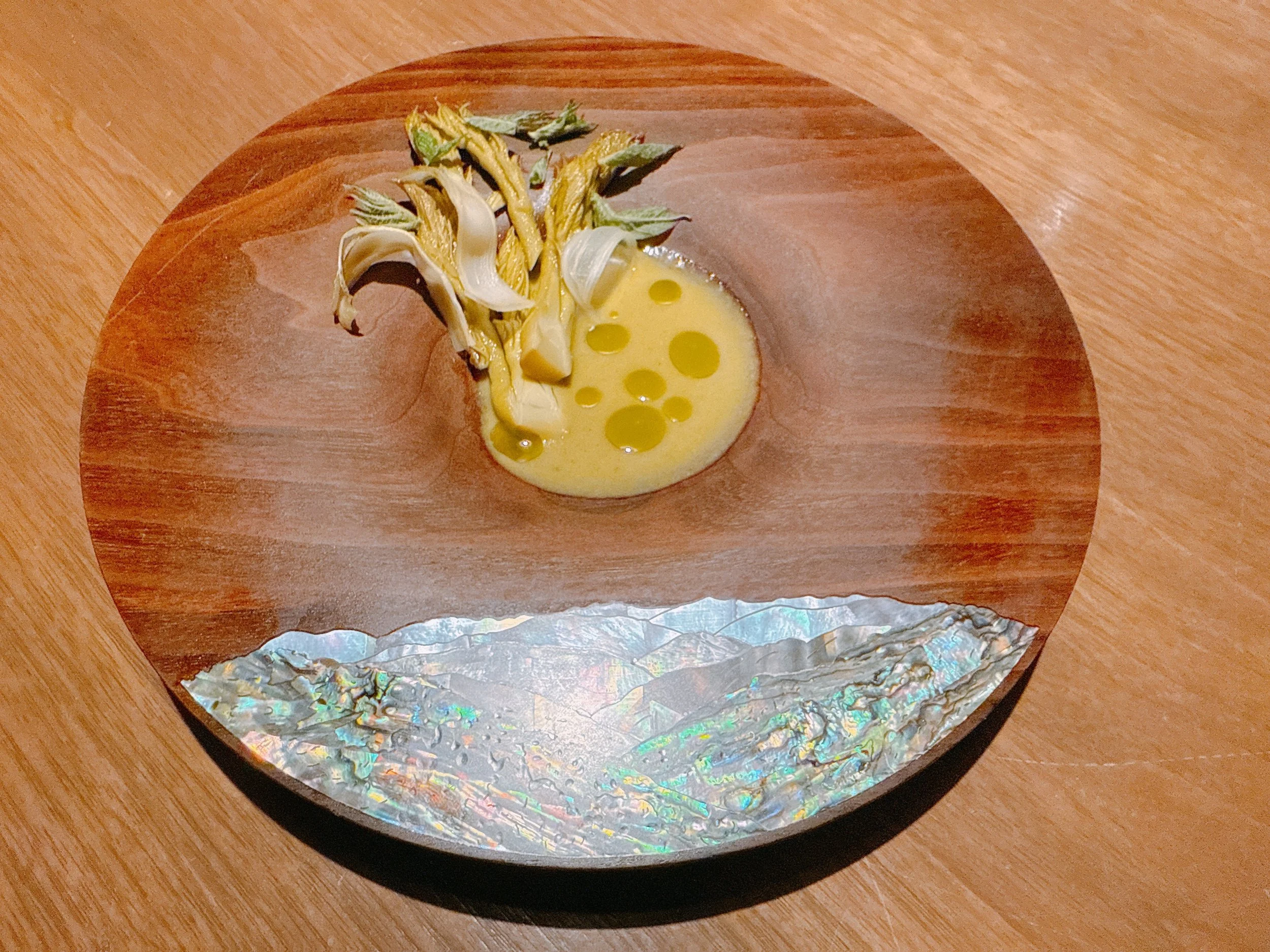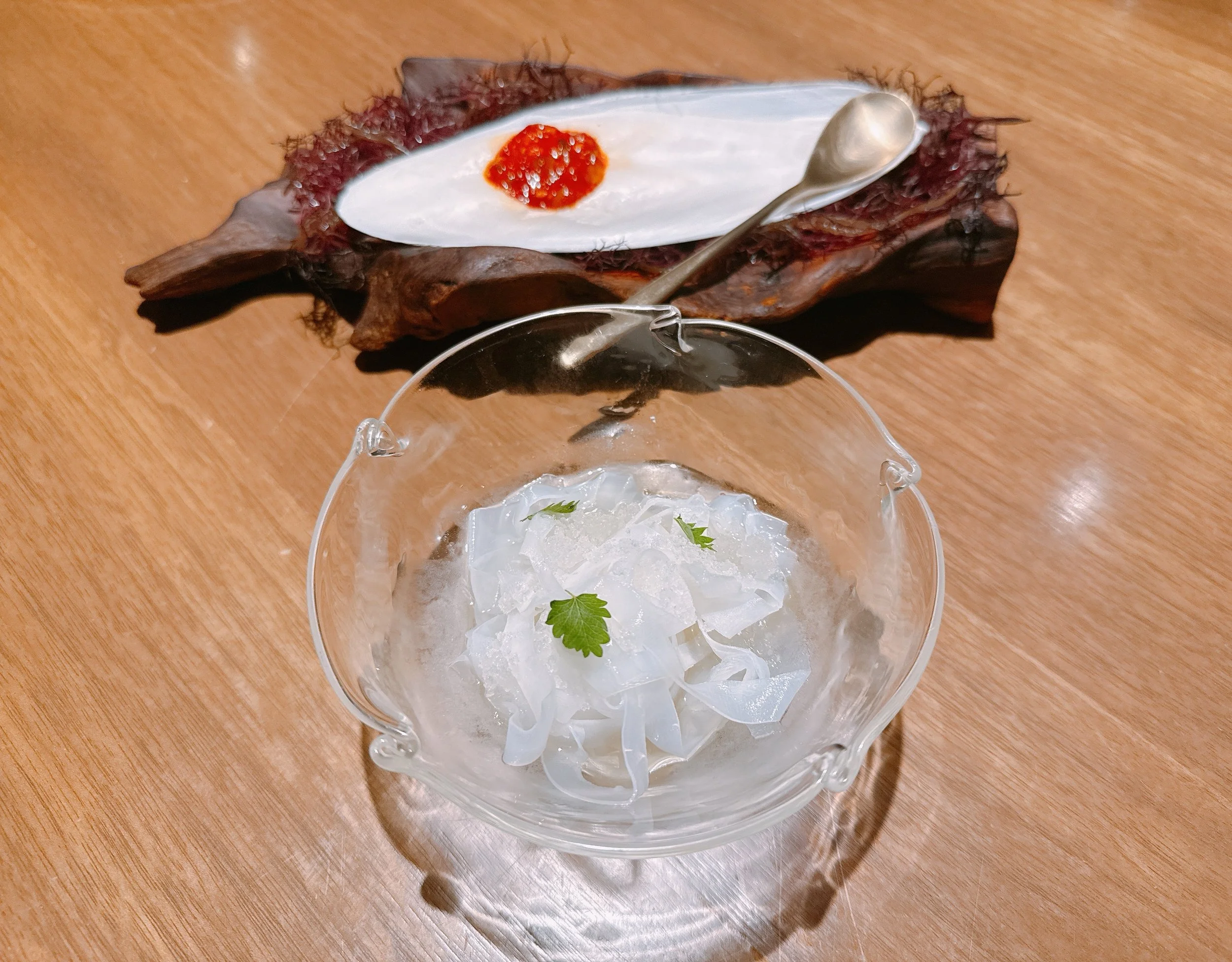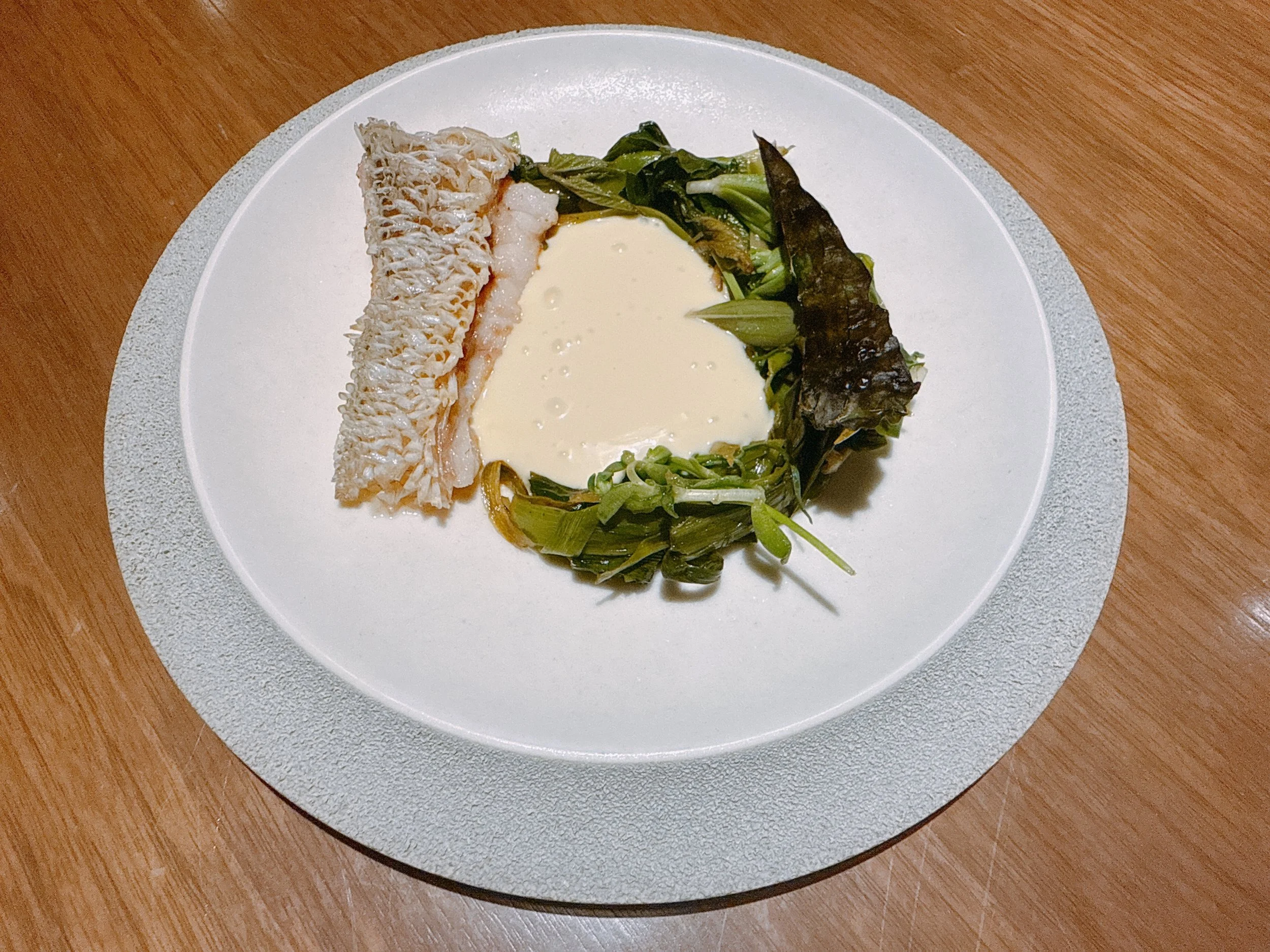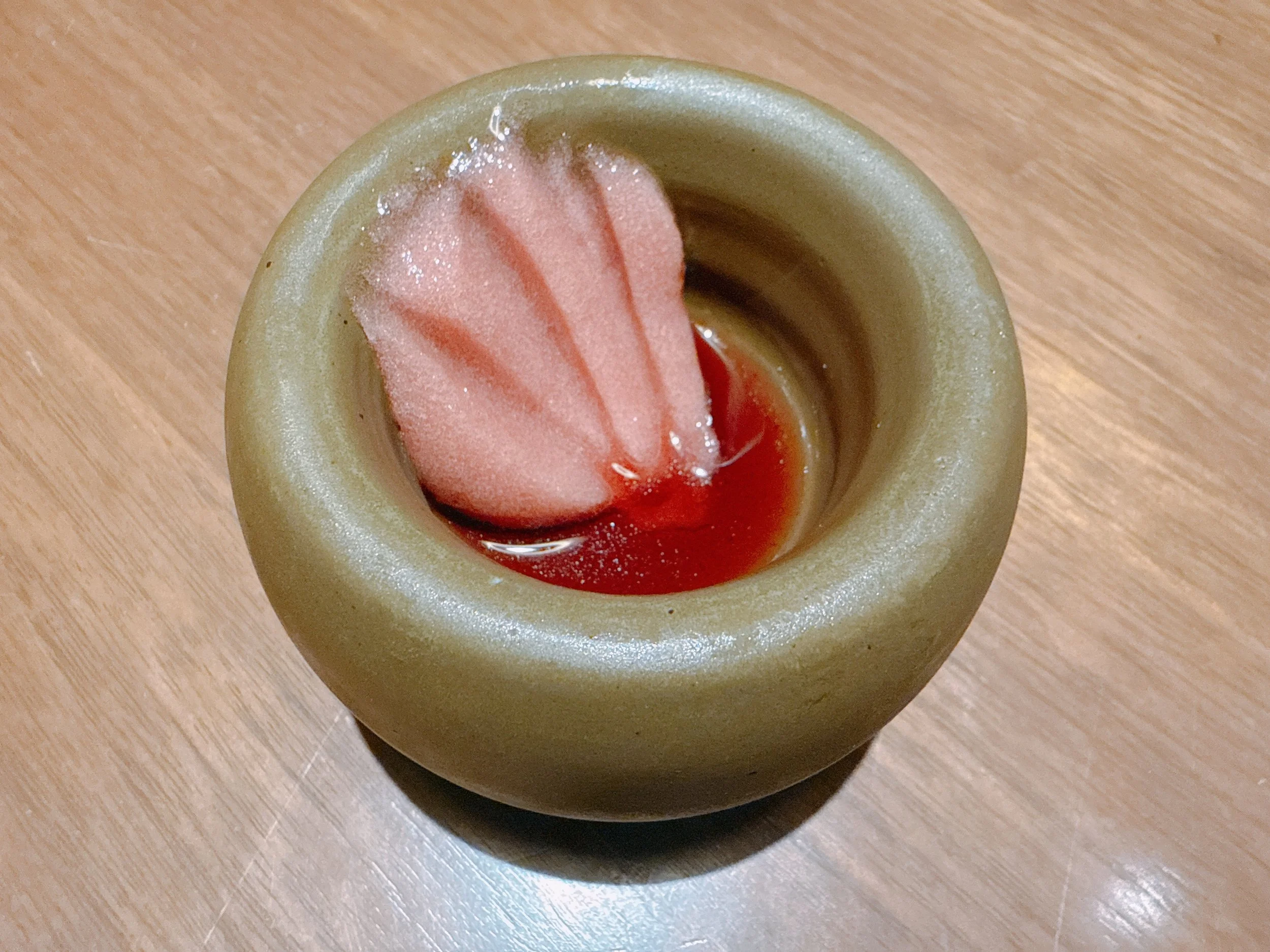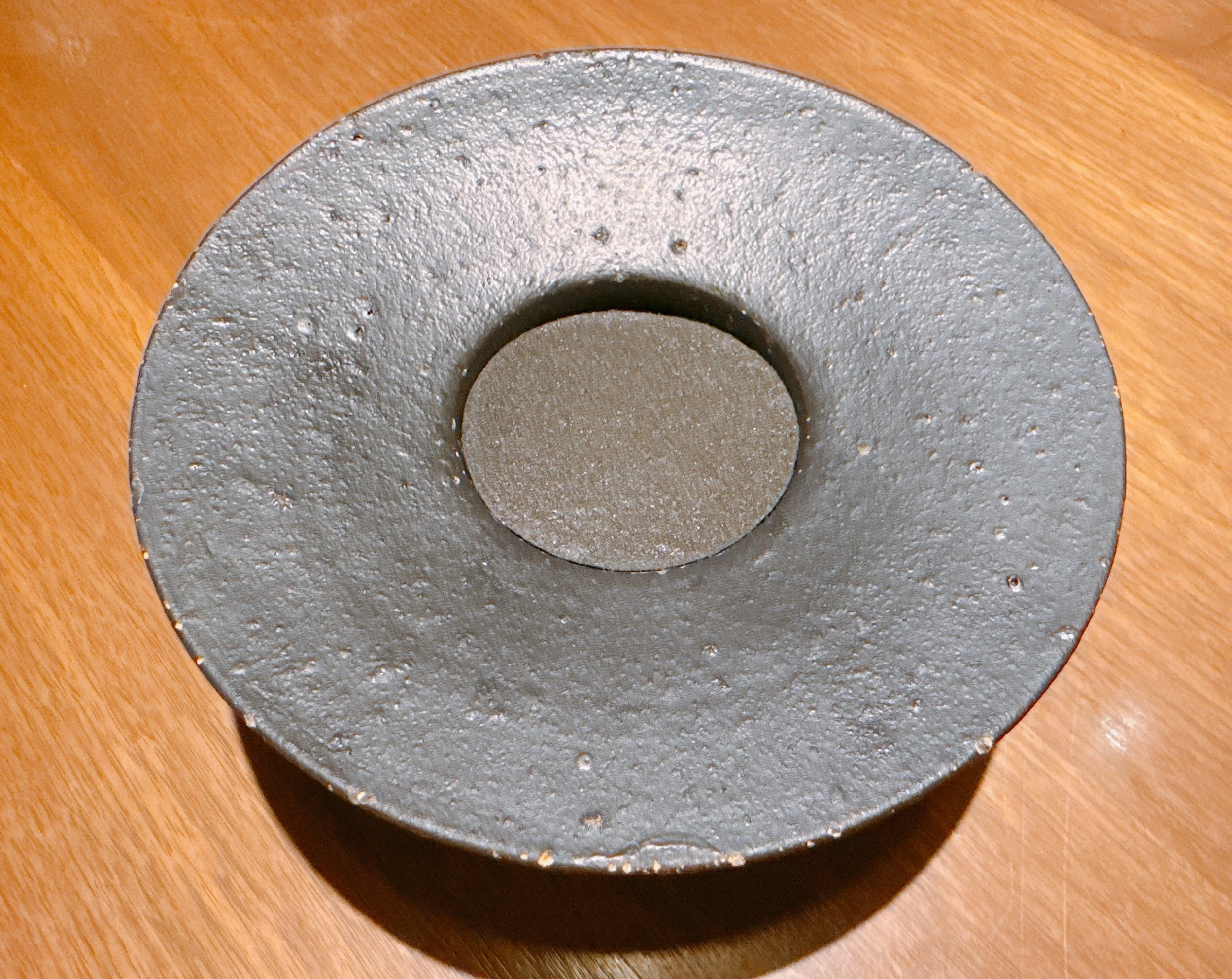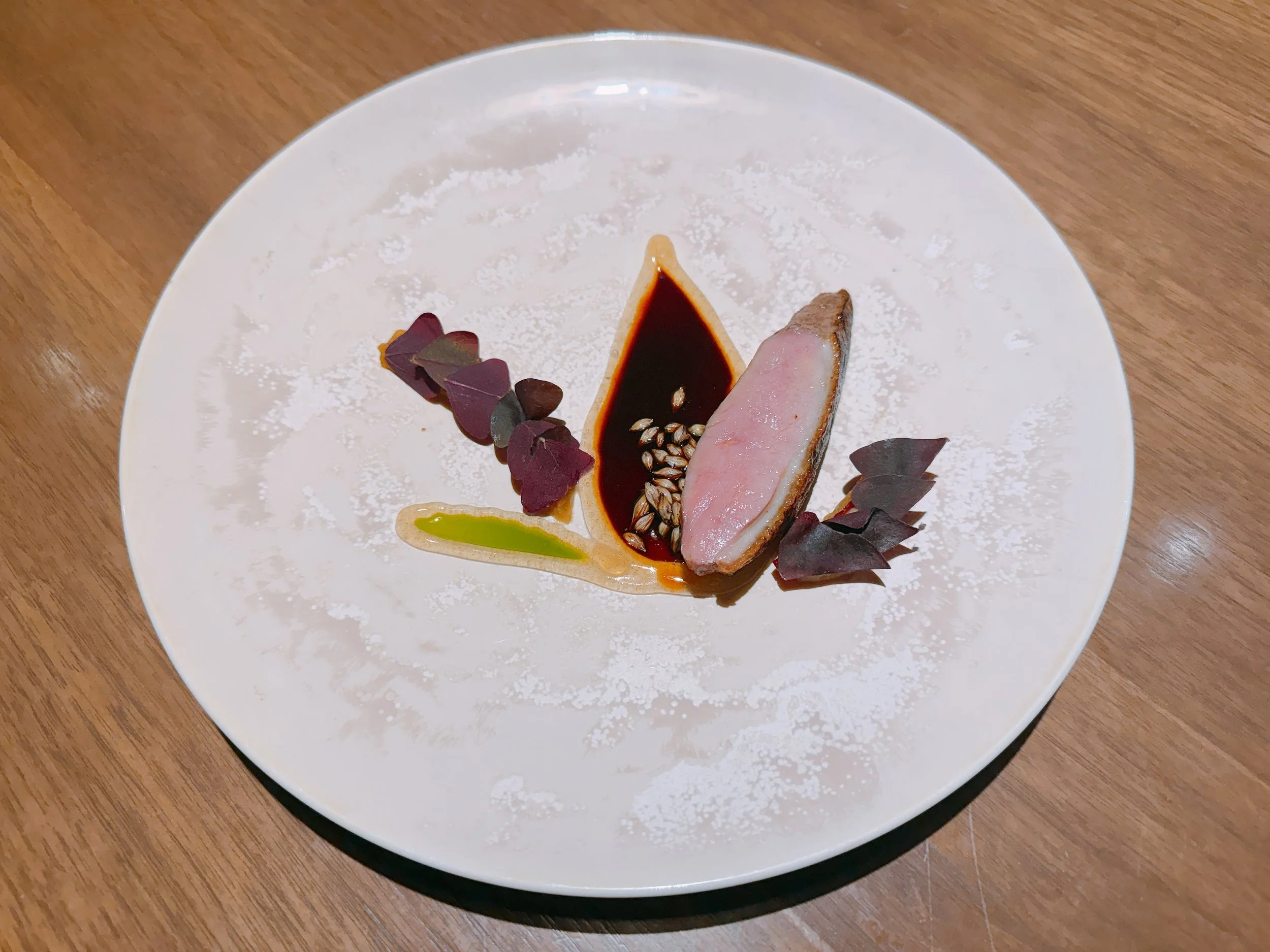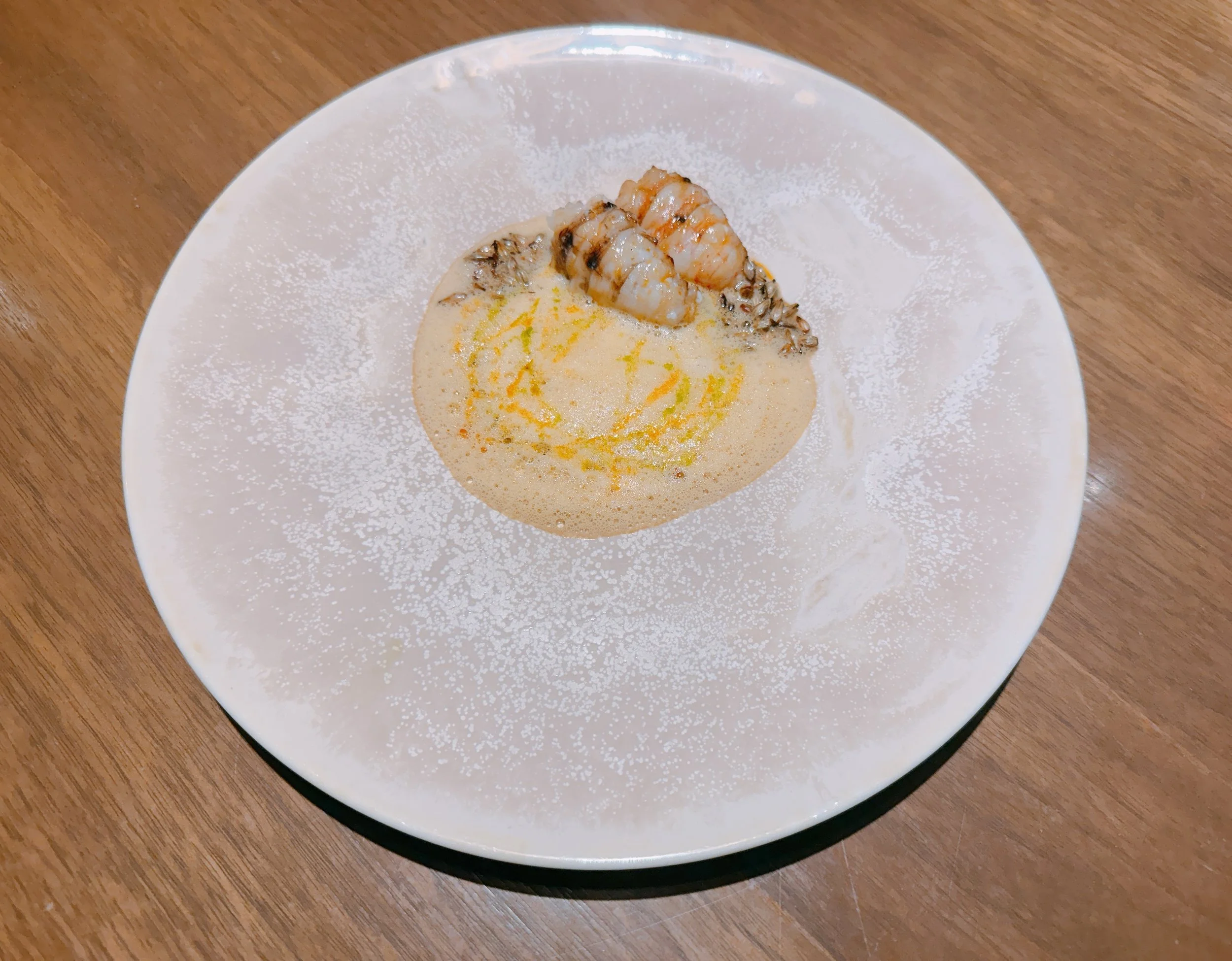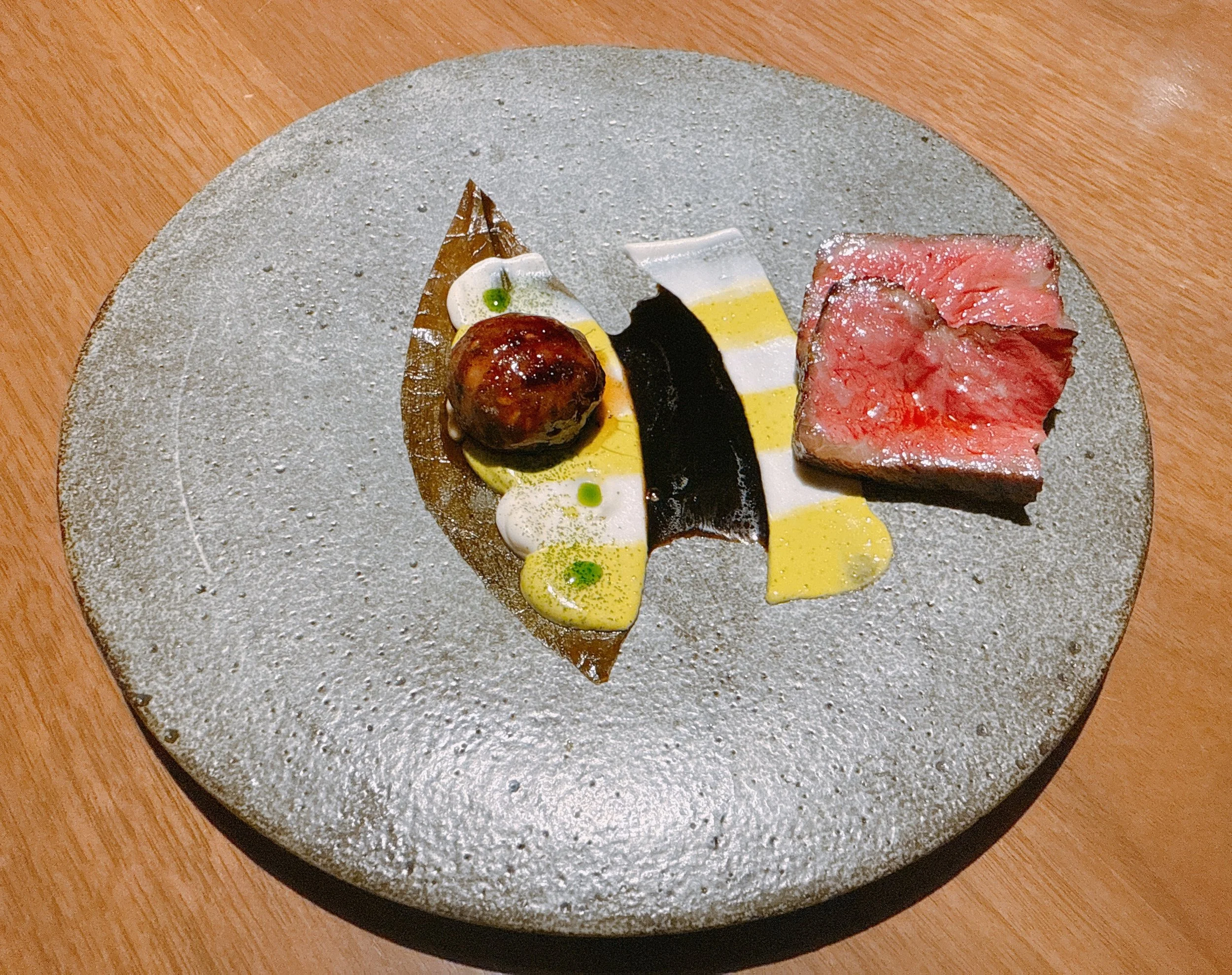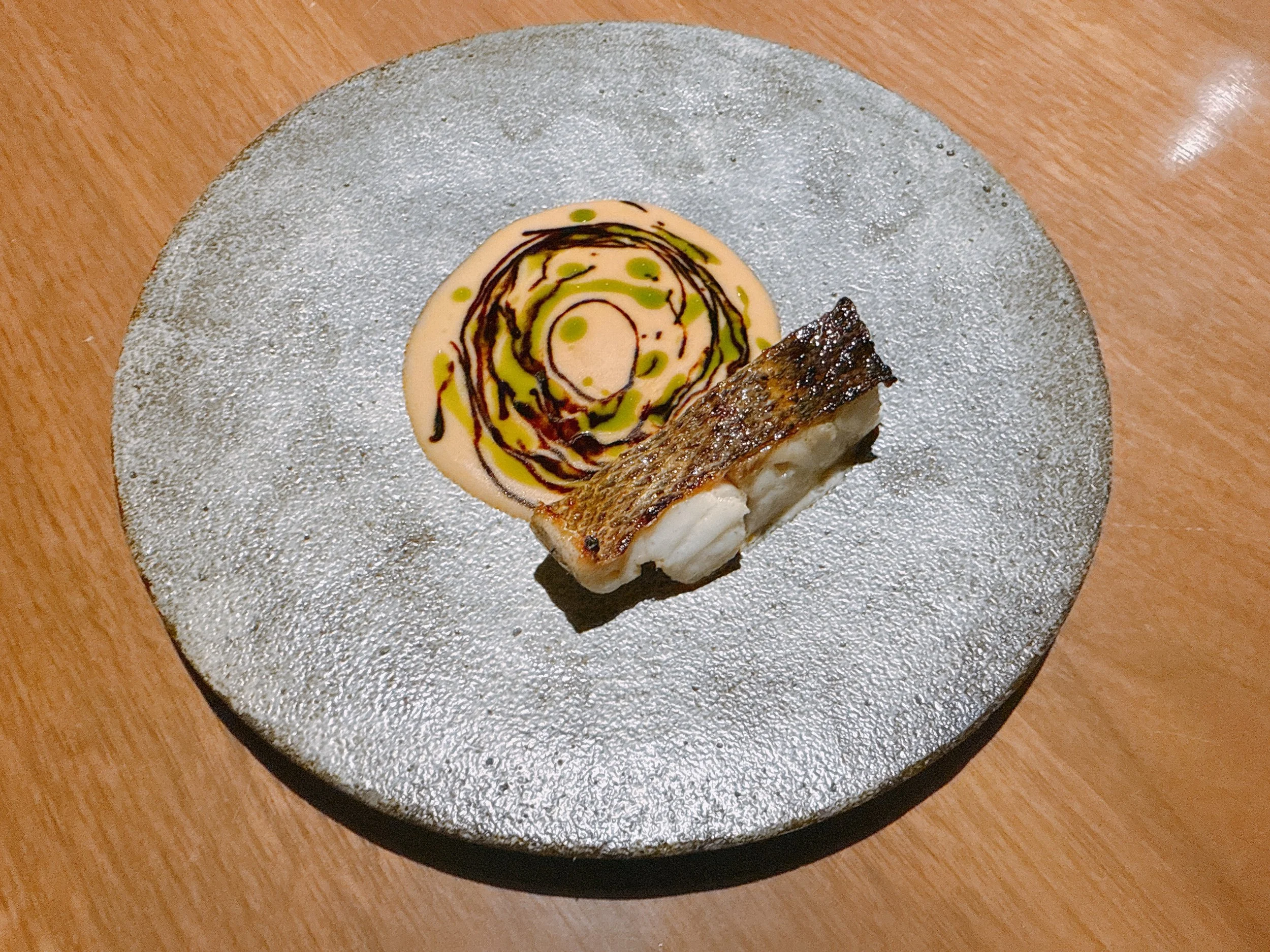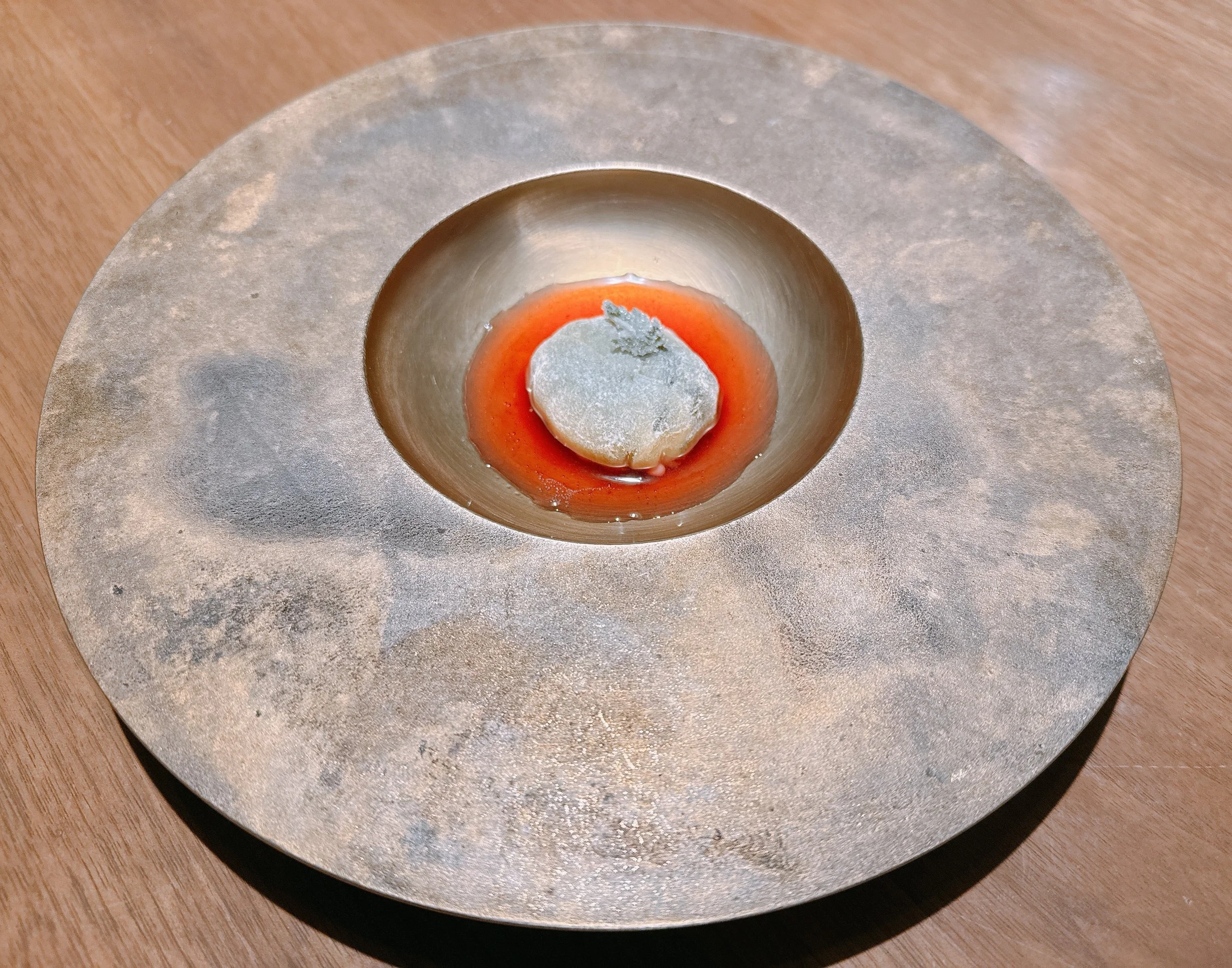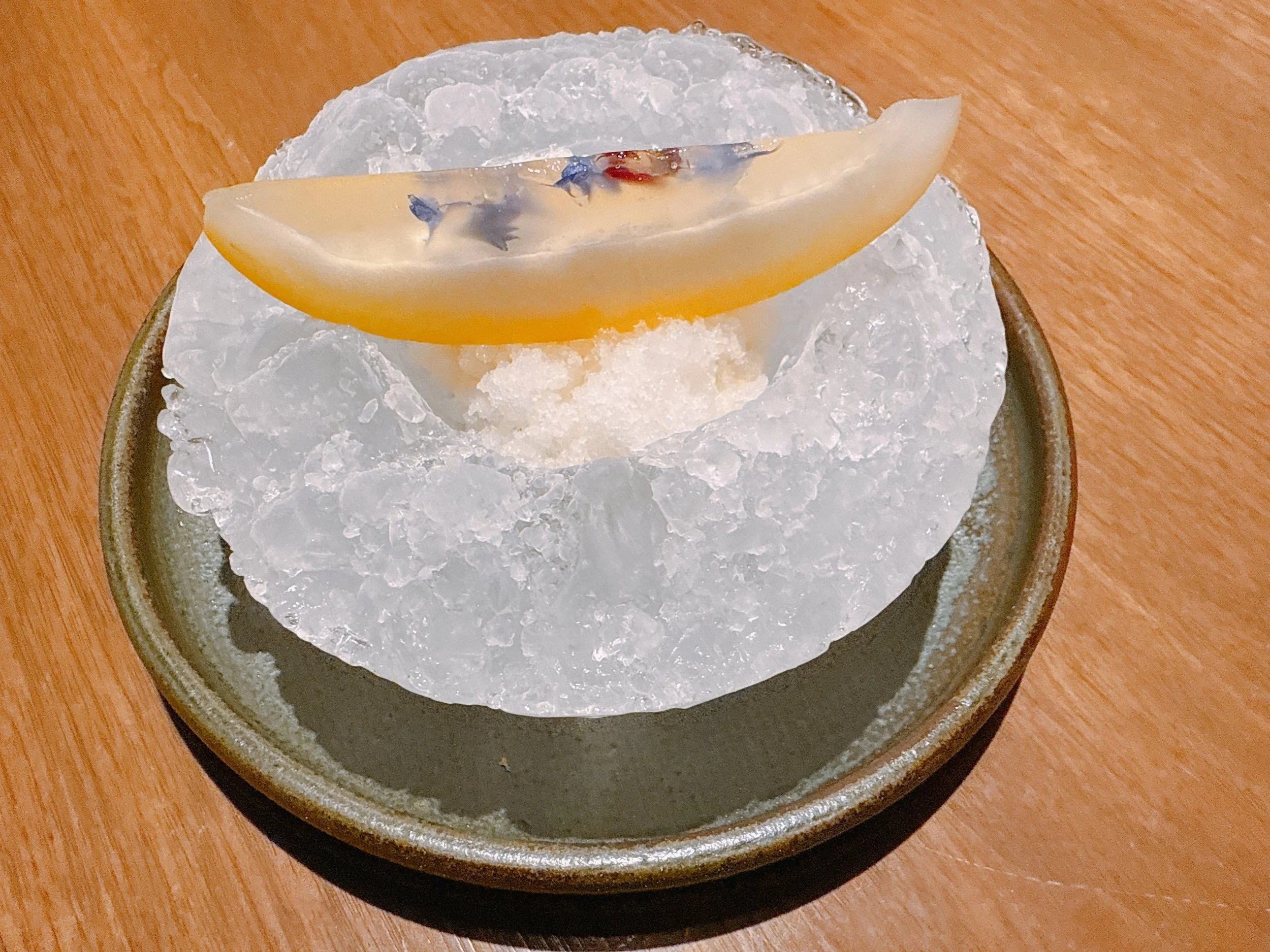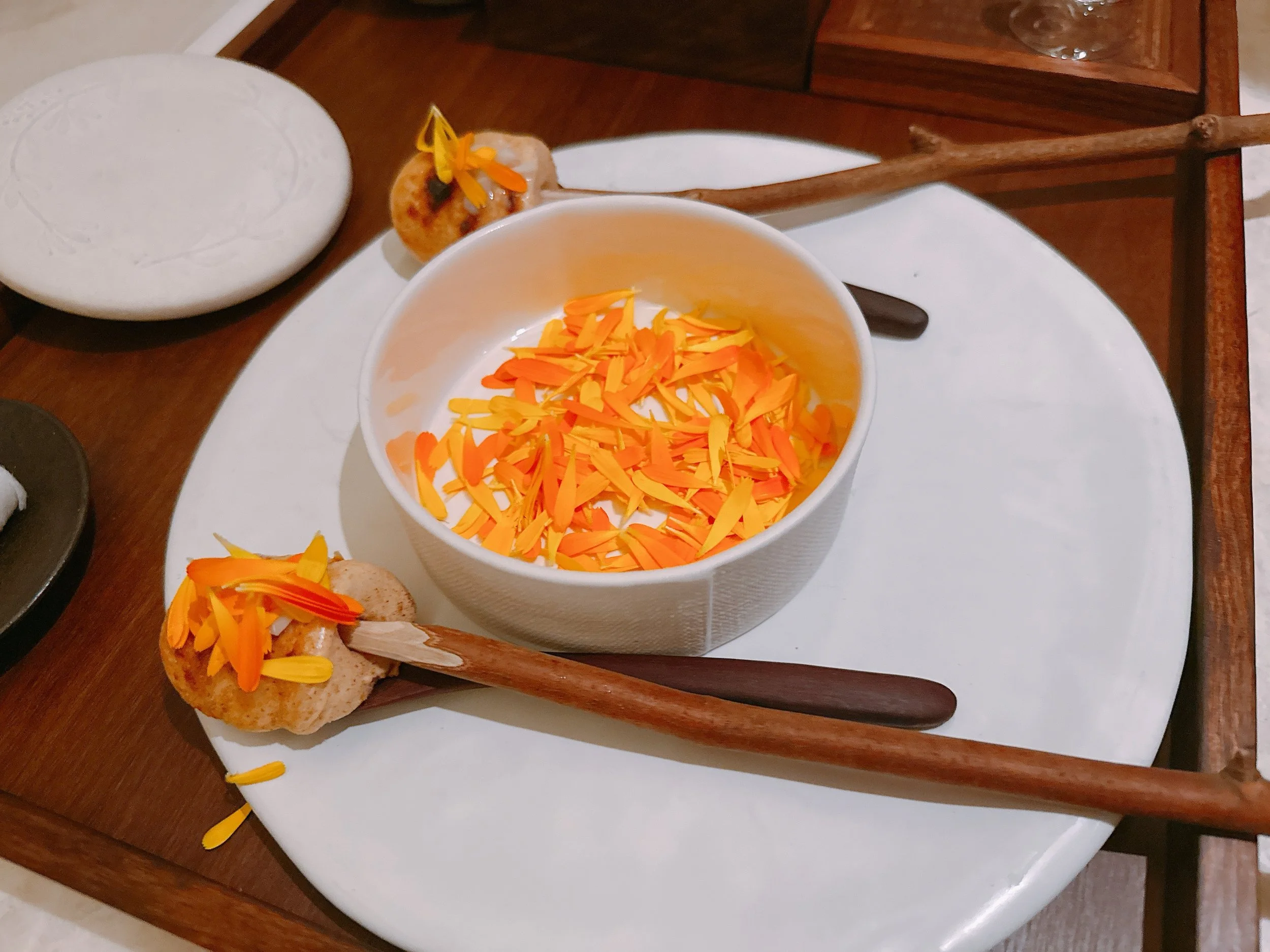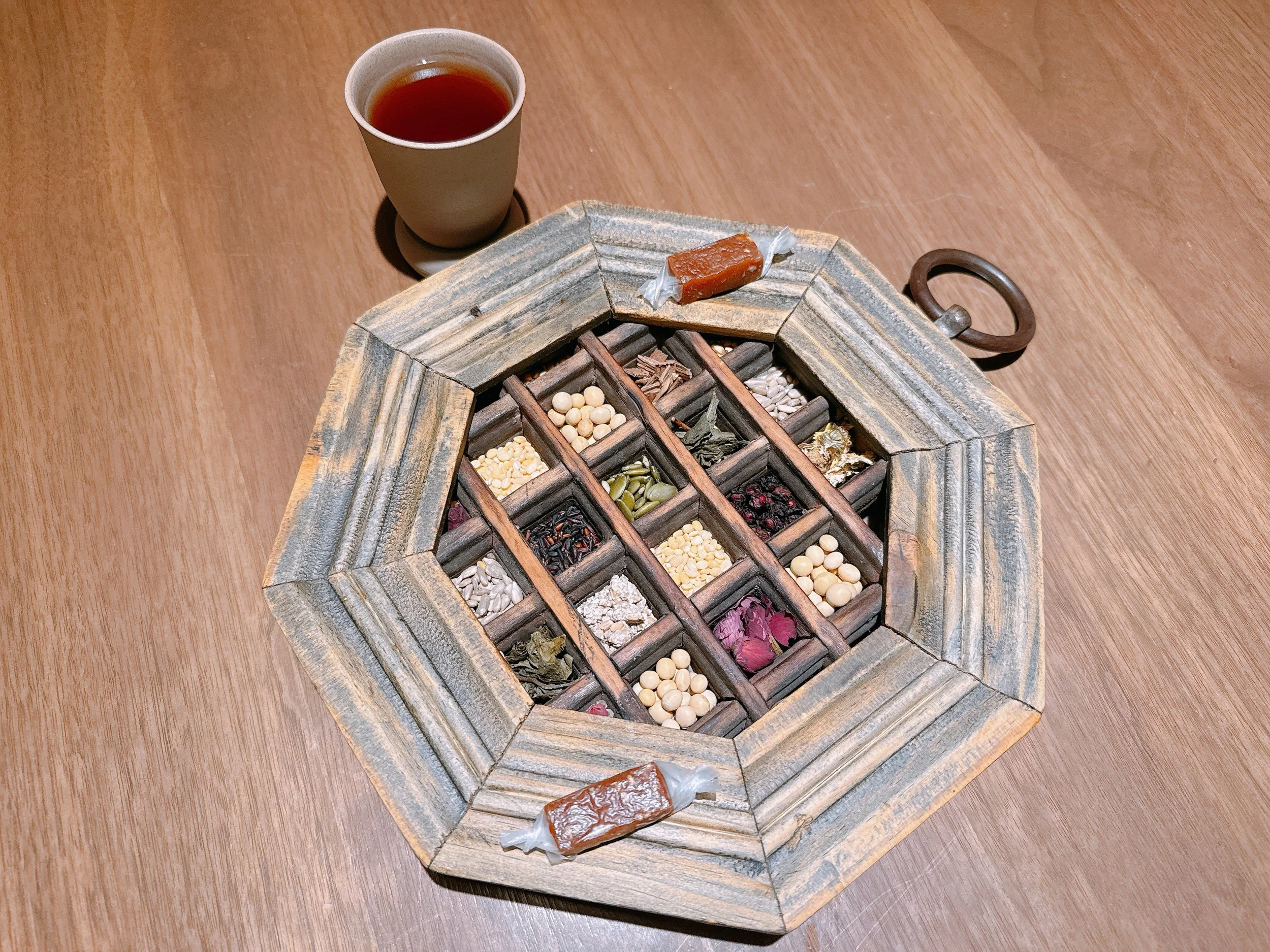Evett - Seoul
Rating: 14/20
Where: Seoul, South Korea
When: Dinner for 2 on 6 May 2025
Cost per Person: Tasting menu 280000 KRW ($200), Wine pairing 240000 KRW ($175)
Accolades: 2 Michelin Stars
Why: Non-traditional takes on Korean ingredients and preparations
“Evett” is a restaurant in Seoul that aims to create novel interpretations of Korean ingredients. However, the kitchen doesn't necessarily use Korean culinary techniques, so this is by no means a traditional Korean restaurant. Australian-born chef Joseph Lidgerwood had previously worked at The French Laundry and The Ledbury, which sounded like good signs, as did Evett’s newly-earned two Michelin stars. But we had also heard less favorable comments from friends, so we stopped by to see who was right. So we found ourselves, 4 1/2 hours after landing at Incheon, in a unassuming side street in Gangnam, where Evett was located on the ground floor of what looked like an office building. The dining room's design was modern, with a small open kitchen at one end. The generic decor of the room didn't give anything away as to what kind of food might be served here.
Foodwise, there was just a single tasting menu for dinner, with dietary restrictions being accommodated. Lunch offered a shorter (and cheaper) menu. Regarding beverage pairings, our choices were either a seven glass wine pairing (240000 KRW, about $175), a six glass Korean alcohol pairing (150000 KRW, $110) or a six glass non-alcoholic pairing (80000 KRW, $60). We went for the wine pairing, which included one Korean cloudy rice wine. The pours were pretty generous, amounting to a healthy amount of wine, most of which arrived with the later savory courses. I should also mention that the dishes arrived at a pretty rapid clip, so that our fifteen course meal lasted a mere 2 1/2 hours. In the end, that was a lot of wine during a short amount of time. Enjoymentwise, the paired wines were just so-so, with retail bottle prices generally below $40. Given the not inconsiderable price of the pairing, I'd probably go a different beverage route next time.
Our French sommelier was quite the character. Apparently, his side job was to run a Youtube channel, and he kept mentioning that he grew up in the wine business and that his uncle was the chef of Paris' Arpège. In addition, he was very prescriptive about how to drink wines with food: “always try the food first” before taking any sip of the wine. As he put it, “the food is the painting, and the wine is (just) the frame”, meaning that the first taste of food should be unadulterated. I can see where he's coming from, but can equally see the argument of taking a sip of wine first to reset the palate after whatever one previously ate (or drank). Later on, he didn’t allow me to take a picture of a wine bottle until after I tried the matching food, so that I could “fully enjoy the pairing”. Overall, this was a bit too much of being told how to eat and drink, and came off as slightly condescending.
Let's get back to the food, though. Shortly after being seated, we were greeted with a cold honey/loquat drink. It was quite enjoyable, full of sweet honey, and with a light acidity 17.
Our first course was served hanging from a “tree”, which was a real branch that had been coated to render it food-safe. An acorn crisp was prettily decorated with edible flowers and contained a smoked mackerel, soy milk crème fraîche, a Korean citrus fruit (yuja) and apples. The fish was fine, but its coating was very thick and fried tasting, making this a pretty heavy dish 15.
The next dish was meant to resemble a traditional Korean cookie. A cover of beeswax hid a filling of beef tartare, honey and kimchi, all sitting on a biscuit made with smoked beef fat. The cookie's filling was nice enough - especially the crunchy vegetables -, but the covering of beeswax was way too thick for my taste. A thinner shell might have let the other flavors shine more 14.
A donut made from sticky rice was filled with caramelized cream, a black garlic puree and an anchovy crisp, before being topped with a little rice cake disc. This dish was served at most lukewarm, and my donut was not just pretty dry, but also tasted of essentially nothing. My wife told me that hers had a liquid filling, but mine clearly didn't - maybe the kitchen just forget to add it in my case? 12
Next up, we received a presentation that looked like a flower. It was a Korean potato pancake topped with fermented flowers, soy-sauce-preserved wild garlic and violet flower petals. The pancake had a chewy texture, and tasted very fried, but not really of potatoes. There was some acidity, but overall I didn't really know what to make of this dish 13.
Angelica (an herb) was the star of the following course. Prepared in several different ways (soft cooked, shaved, and just as leaves), it came with a sauce containing more angelica, lovage, soy milk and pine oil. A pleasant dish with a light herbal taste and a hint of bitterness 14.
Cuttlefish had been cut into the shape of noodles and formed the basis of a reimagined Korean cold noodle dish. The “noodles” were topped with a pear granita, and sat on top of little cubes of smoked deodeok roots and a sesame cream. A deodeok broth was added tableside. For further seasoning, we were given a mixture of chilis and fermented cuttlefish on a separate plate. The dish was served ice cold. The cuttlefish noodles were creamy, the deodeok roots smoky, but overall the result was very lightly flavored. Granted, the spicy condiment added more flavor, and more chewy texture from the pieces of fermented cuttlefish in it, but there just wasn't that much of the red sauce to go around. More would definitely have been better. In better news, the pear granita wasn't particularly sweet, and didn't change the overall taste profile too much 15.
According to our sommelier, the next dish was a riff on the famous Korean fried chicken. Here though, it was reimagined to pair with a white wine: an unusual bland of Roussane, Marsanne and Vermentino. Instead of chicken, the kitchen used tilefish, topped with its own crispy scales. The fish was served with a beurre blanc that incorporated some chicken fat, plus a spring salad on the side. The fish was oily, but cooked in a way that made it appear light, almost dissolving when eaten. The fish skin added some nice crunch. The beurre blanc with its sweet citrus taste was a good addition for both the fish and the salad, which was fresh and slightly bitter. Strangely though, there seemed to be sand in both of our salads - presumably a bit more washing would have been in order. But ignoring that, this was a pretty good dish. And yes, the wine did indeed go very well with it 16.
The relatively fatty fish was followed by a palate cleanser. A sorbet made from a Korean rice punch (using black instead of white rice) was served with a berry vinegar. The sorbet had an interesting alcoholic aftertaste, and the vinegar was quite strong. A good palate cleanser, more acidic than sweet 15.
The next dish was called “gat” after the traditional Korean hat, since it was served in a bowl shaped like an upside-down hat. The dish was covered with a squid ink chip, underneath which were some abalone, radishes, perilla seeds, seaweed, a makgeolli (cloudy rice wine) cream and abalone liver sauce. This preparation had some good aspects, but the balance seemed to be off. The juicy radish was quite watery, diluting the sauce, which therefore felt pretty thin compared to a “normal” abalone liver sauce. The chip on top was very sweet - a weird addition to an otherwise savory dish. The abalone was fine, maybe a tad too chewy, and there was only a little of it 13.
A duck breast was served with a duck jus and sprouted malt. The meat was flavorful, but I wish that it had had a bit less fat under its skin. There were some fruity accompaniments on the plate (whose descriptions I sadly missed), and they created a nice balance to the duck 15. The pescatarian alternative had shrimps served in a crab bisque, accompanied by the same sprouted malt. The shrimp was lightly smoky and juicy, and the sauce very flavorful. The malt mainly added some crunch 17.
Our final savory course came with some condiments on the side. Heritage brown rice was available to be added to taste, and there was also a white kimchi granita flavored with magnolias and mustard leaves. The main course was a sirloin of Korean beef (hanwoo), served with a beef jus, a white garlic puree and a kalbi meat ball. The good parts of this dish were delicious: the meatball was juicy and flavorful, the sauces were lovely with slightly herbal notes. Adding a bit of kimchi snow lightened up the dish. However, I was disappointed by the main cut of beef. Flavorwise, it was fine, but its texture was very chewy - not what I would have expected from Korea's answer to wagyu beef. With a better cut of beef, this dish might have been a 17 or 18, but as it stood, a 16. For pescatarians, this course featured sea bass and a mushroom sauce. This fish was pretty fatty, and there was a distinct mushroom flavor in the sauce 16.
A rice cake made from makgeolli (the cloudy rice wine from before) came with a cactus fruit syrup. Served cold, the rice cake had a consistency similar to mochi, with a sweet filling that was a bit cinnamony in taste. The sauce was quite nice, but unfortunately we were given a fork as our only utensil. With a spoon, we definitely would have cleaned out the plate 16.
A deseeded Korean watermelon wedge was filled with a yuzu jelly containing seasonal flowers. It sat on top of watermelon ice, a kumquat marmalade and a custard and cake made from the watermelon seeds. The jelly was lightly sweet but the crunchy melon bore no resemblance in either texture or taste to a “regular” watermelon. The cake had a bit of a savory note, but otherwise, this was a light, sweet, and fruity dish 16.
At this point, we briefly stepped into the kitchen to help roast a marshmallow made from rice wine, chrysanthemum, jujube, ginseng and cinnamon. The result was sweet and tasty 16.
To end our dinner, we were served a hot tea made from treebark, as well as a sesame oil caramel wrapped in edible rice paper. The tea tasted “healthy”, and the caramel was very rich, almost too much so - it felt a bit like eating sesame oil 14.
Overall: This was an interesting voyage through Korean ingredients, featuring riffs on several staples of Korean cuisine. Not being super familiar with Korean cooking, it was hard for me to appreciate how clever these reimaginings might have been, so I had to judge the food simply by how it tasted. In that regard, there were a few good dishes, but also a considerable number that were “odd” rather than enjoyable, and that didn't really justify a Michelin star (let alone the restaurant's current two) 14.
